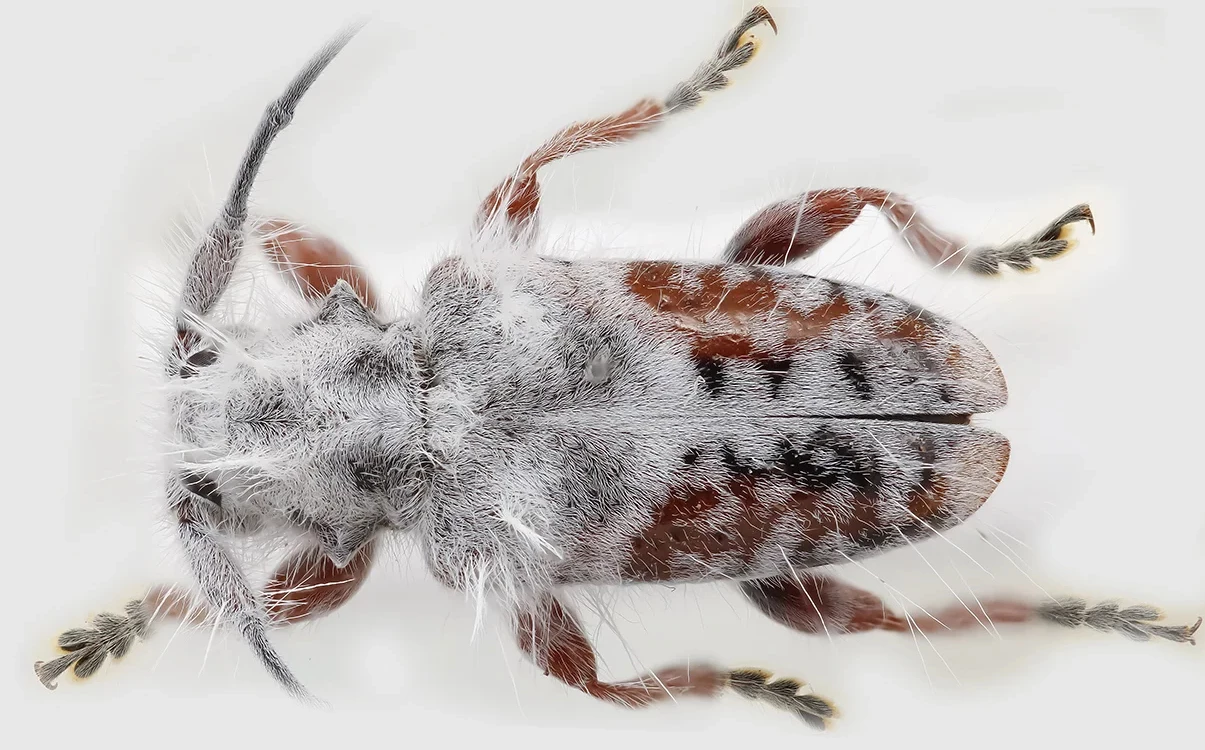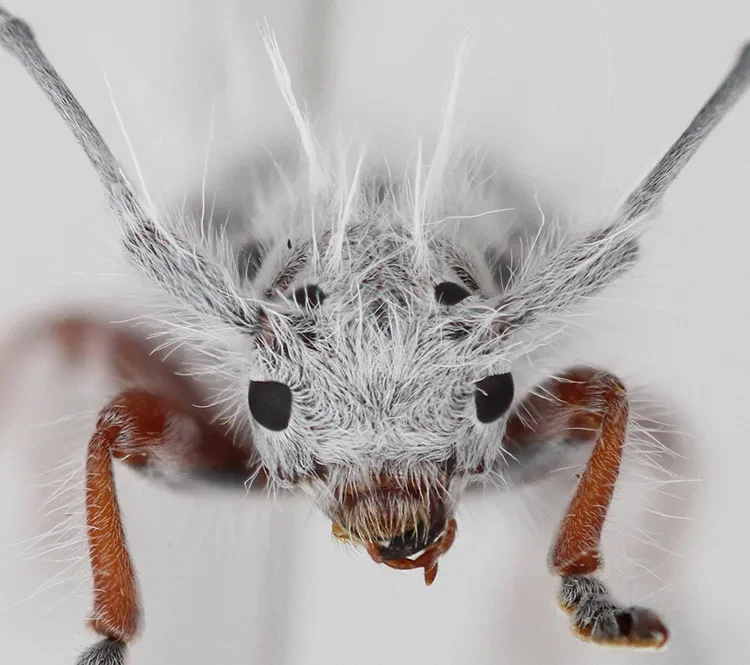Would you want to eat this beetle? Probably not, as it appears to be covered in fungus. That "fungus" is actually hair, however, which the recently discovered insect may use to put off would-be predators.
A lone example of the beetle was found by James Tweed, a PhD candidate in The University of Queensland's School of the Environment, when he was camping in the rainforest in Australia's Lamington National Park.
As Tweed was walking through the campsite one morning, he spotted what he initially thought might be a bird dropping on a mat rush leaf. Upon closer examination, though, he realized that the fuzzy blob was something else entirely.
"To my amazement, I saw the most extraordinary and fluffiest longhorn beetle I had ever seen," he says. "Measuring 9.7 millimeters, it was a striking red and black beauty covered in long white hairs."

Upon getting back from his trip, James proceeded to search through journals, books and the internet in an unsuccessful attempt to identify the insect. Finally, after emailing entomology experts at the Australian National Insect Collection (ANIC), he was told that the beetle constituted an entirely new species.
The surprises didn't stop there, however. When Tweed travelled to the ANIC and compared his beetle to those in the collection, the experts determined that it was actually a whole new genus, which is a broader classification than species. The animal is now known as Excastra albopilosa.
“We chose the name Excastra for the genus, which is Latin for 'from the camp,' and for the species name, we decided on albopilosa which translates to 'white and hairy'," James says.

Tweed and colleagues still don't know the purpose of the hairs, although the scientists theorize that the fuzzy covering may make it look like the beetle has already been killed by an insect-killing fungus – not very appetizing for birds or other predators. That said, more specimens will have to be collected in order to know for sure. And so far, none have been forthcoming.
"The area near Lamington National Park has been popular with entomologists for more than 100 years so it’s puzzling that it hasn’t been found until now," says Tweed. "I’ve been back several times to look for more of them but haven’t had any luck."
A paper on the research was recently published in the Australian Journal of Taxonomy.
Source: The University of Queensland






